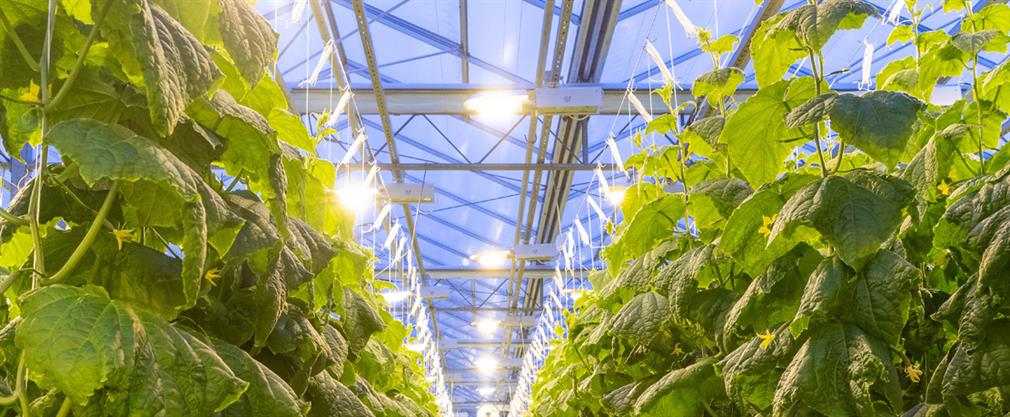Light and shade in the greenhouse

Your plants need light, and by having the plants inside a greenhouse, they will get plenty of light during the spring, summer, and part of the autumn – a little depending on where you live. Because the greenhouse has a roof and walls made of glass or polycarbonate, the sunlight will come more or less unhindered into the greenhouse doing its magic by making the plants grow. The process of plants growing is called photosynthesis. In short, this process is the basis for life itself as it transforms light, air, and water into firm matter. During the summer, you will have no problems getting enough light for your plants. On the contrary, you often need to control the amount of sunlight by putting up a shade net in the greenhouse as the plants cannot get too exposed and hot.
The photosynthesis process takes place automatically, but you can help it along by adding good soil, air, and water to your plants. Leaves are green due to a substance called chlorophyll, which can absorb light. Light energy is essential for photosynthesis to take place. The plant then converts water from the soil and carbon dioxide from the air into oxygen and glucose. The glucose is turned into starch, which is difficult to dissolve in water. The starch makes the plant able to retain water even if there isn’t much water around it. By adding light to your plants, the miracle takes place – your plants grow and produce new leaves, flowers, fruits, and roots.
Not all plants require the same amount of light
You must control and regulate the amount of light coming into your greenhouse as not all plants need the same amount of heat and light. When you decide which plants you want inside your greenhouse, it is good to select plants with more or less the same requirements for light and humidity. Find out what the plants need and regulate accordingly. It is always easier to create a shadow than producing more light, even though it can be done by putting up electric plant lamps inside the greenhouse. Usually, one should install curtains, shade net, or paint the windows in a light colour if you live in an area with strong sunlight for many hours every day. If you want plants in need of shadow, may we suggest that you plant them somewhere else in the garden – ask your local plant market how to select the right plants for your greenhouse and more.
Greenhouse lighting – using the right colour
The light we can see with our eyes are electromagnetic waves with varying wavelengths. This wavelength ranges from 400-700 nm (nanometers). That is more or less the same light that your plants will need for the process of photosynthesis. The light wavelength is what creates the colours - short waves are more bluish, while long waves are more reddish. Light waves around 500 nm are greenish and are primarily reflected by the plants. With plant lamps in the greenhouse, you can expose the plants to the correct wavelength instead of normal electric light, which will do nothing to make the plants grow. One thing you need to be aware of is the shift between day and night. The plants will need this shift for growing. We recommend that you make sure to put up plant light which delivers the entire visible light spectrum evenly – from blue over green to red.
- Talk with an Expert +44 (0) 203 936 8258
- Chat with an Expert
- Get a call from an Expert
- Buy now
- Talk with an Expert +44 (0) 203 936 8258
- Chat with an Expert
- Get a call from an Expert
- Buy now
- Talk with an Expert +44 (0) 203 936 8258
- Chat with an Expert
- Get a call from an Expert
- Buy now


























